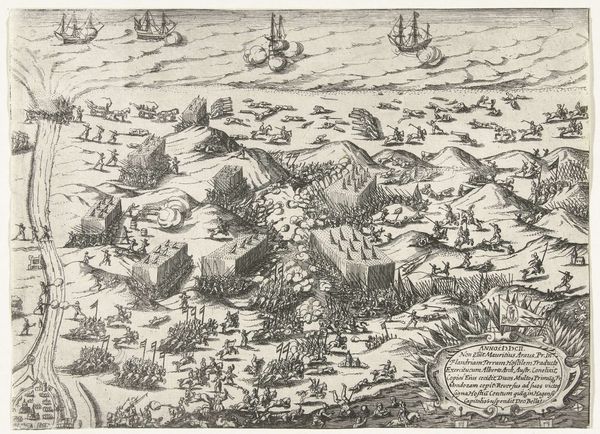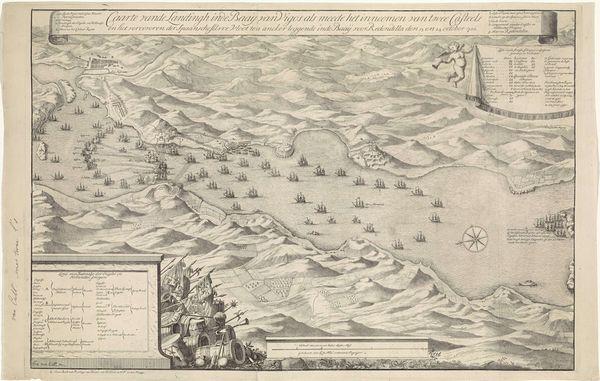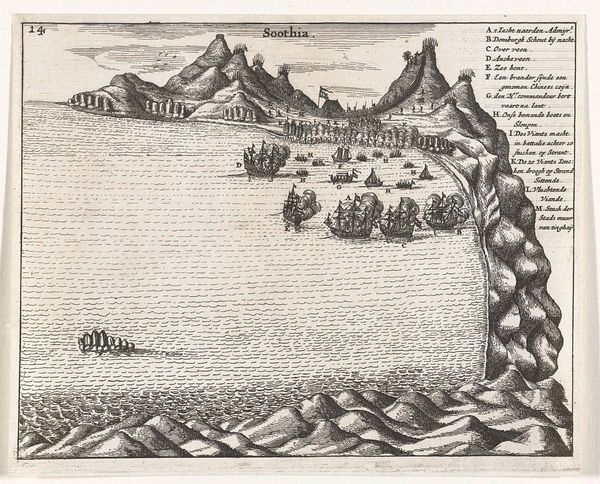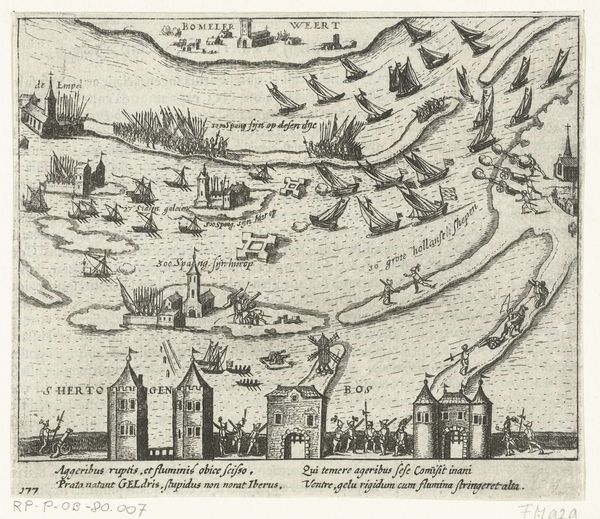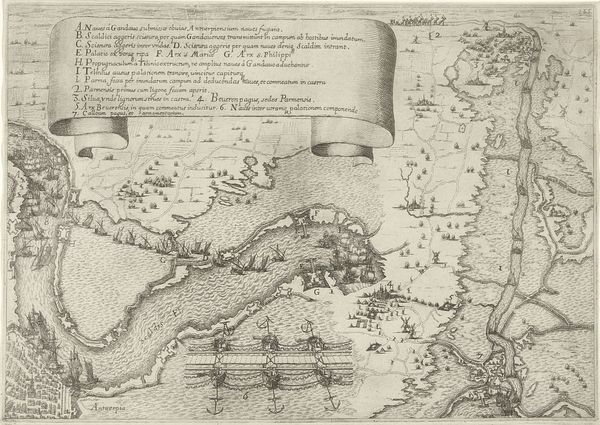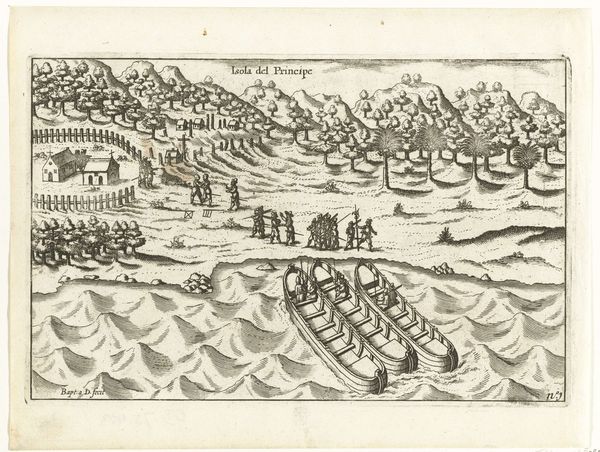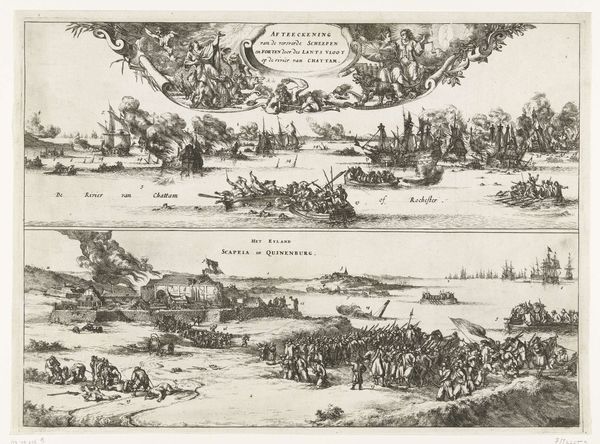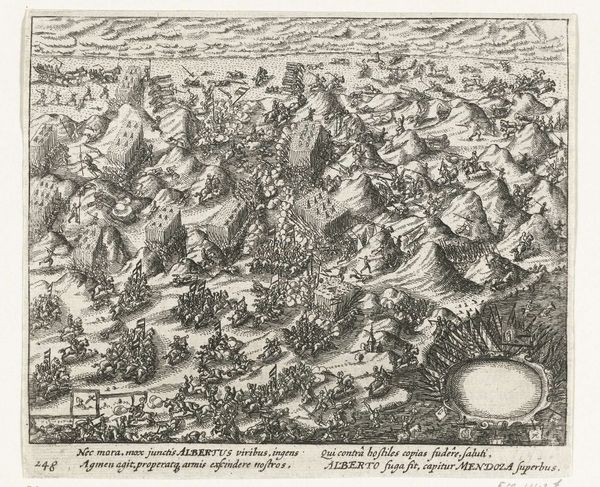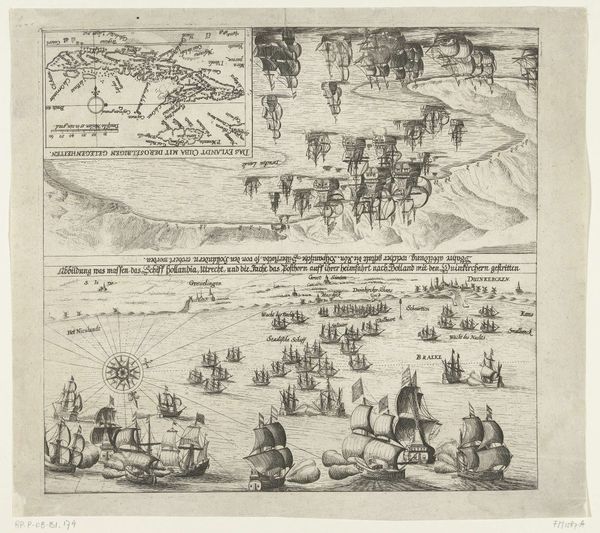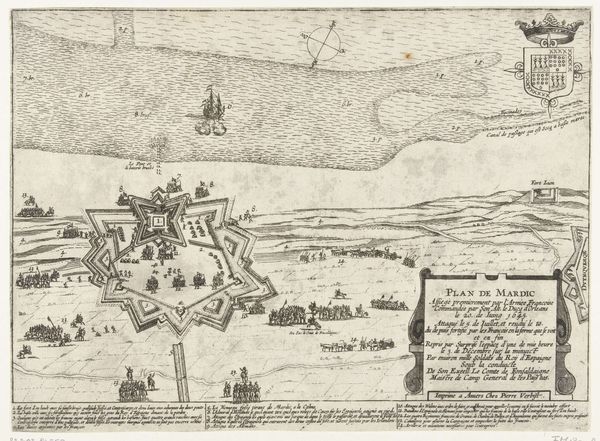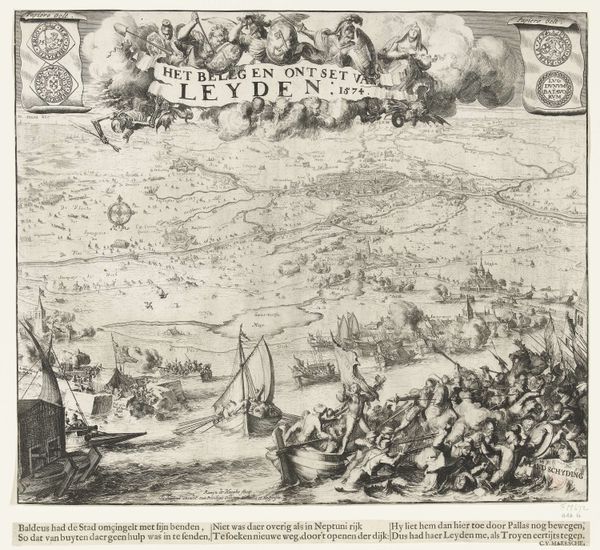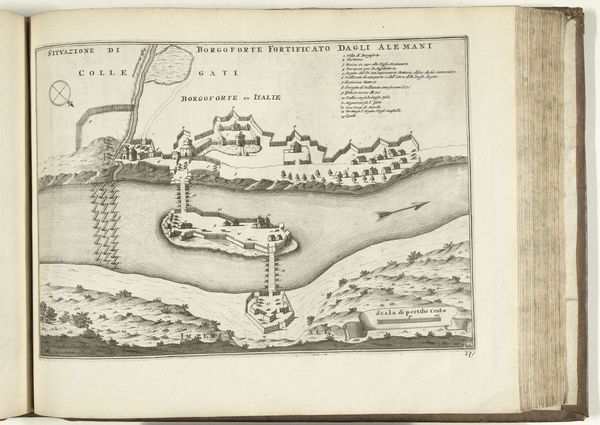
print, etching, engraving
#
baroque
# print
#
etching
#
old engraving style
#
landscape
#
orientalism
#
cityscape
#
engraving
Dimensions: height 137 mm, width 170 mm
Copyright: Rijks Museum: Open Domain
Editor: Here we have "Vloot bij Heijtan (China), 1663," which translates to "Fleet at Heijtan, China, 1663," created around 1670 by an anonymous artist. It’s an engraving, quite detailed and creating a sense of vastness. What strikes me is the detailed landscape surrounding the fleet of ships. What do you make of this image? Curator: This print offers us a window into the 17th century's European perspective on global trade and Dutch maritime power. Consider its function; this isn’t simply a pretty landscape. It documents Heijtan, now Dongshan Island in China, mapping it for strategic and commercial purposes. What details tell us about the artist's potential motives and intended audience? Editor: I see that the ships are labeled, along with locations around the port, so it feels very much intended to provide technical, strategic, economic details... more than anything purely artistic. Is that a common approach for landscape art of this era? Curator: Precisely. Landscapes during this period, particularly in print form, often served purposes beyond aesthetics. They were instruments of power. The Dutch East India Company, for instance, commissioned similar works to control trade routes and assert dominance. Note the composition, where the Chinese settlement looks somewhat vulnerable relative to the imposing Dutch fleet. It visually reinforces a colonial narrative. Editor: So it’s less about accurate representation and more about projecting a particular image of Dutch power in a global context? Curator: Exactly. The artist, while perhaps never having visited Heijtan, participated in constructing an idea of "the Orient" for a European audience. We have to ask how those images were used to justify colonial ventures and trade monopolies. This reframes the piece as political, not simply picturesque. Editor: That’s a fascinating reinterpretation! I initially saw a landscape but now realize it's a form of propaganda. Curator: Understanding the historical context allows us to unpack the layered meanings embedded in even seemingly simple landscape prints. Consider this lens whenever you view art.
Comments
No comments
Be the first to comment and join the conversation on the ultimate creative platform.
